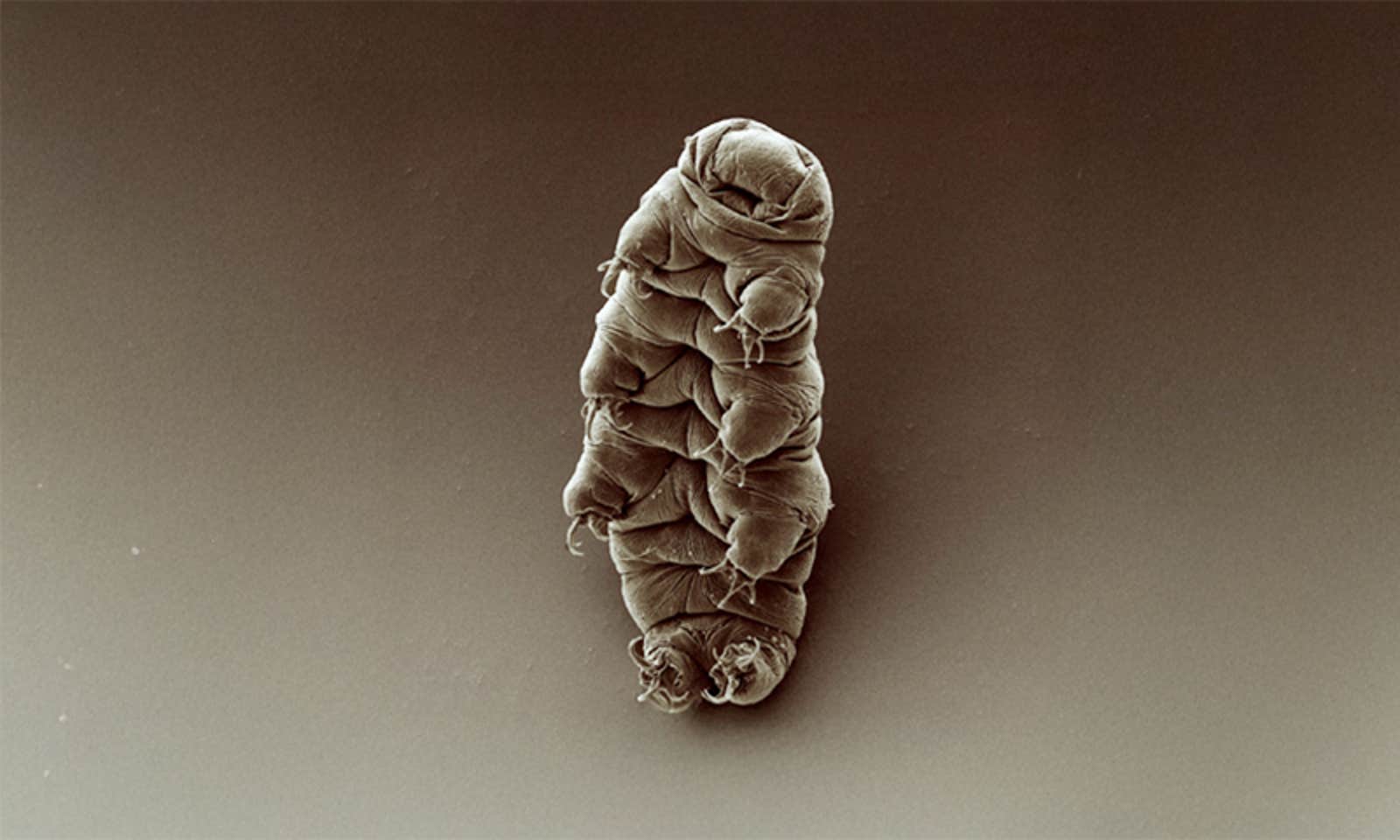Science
Rare Footage Captures the Birth of Water Bears in Action

The birth of a baby water bear, or tardigrade, has been captured in a remarkable video showcasing the resilience of these microscopic creatures. Known for their extraordinary ability to survive extreme environments, from high radiation to the vacuum of space, water bears face vulnerability during their early moments of life.
Under the microscope, viewers can observe the mother water bear transporting her young within a large sack of partially shed skin. Eventually, she discards this exoskeleton, allowing one egg to escape. The tiny water bear inside begins its struggle to break free from the shell, using its mouthparts to make its first attempts at independence.
Insights from Tardigrade Research
According to Witold Morek, a researcher at the Wellcome Sanger Institute, water bears have developed two egg-laying strategies. They can either deposit their eggs within the exuvium, which is the shed skin of the mother, or release them directly into the environment. Morek explains that eggs laid in the shed skin often have smooth surfaces, while those laid freely possess more ornamented exteriors.
“This variation in birthing strategies may help the young water bears remain anchored in their habitats, such as moss or lichen,” Morek stated in an email to Nautilus. He elaborated that the ornamentation on eggs laid directly into the environment may protect them from being washed away by rain, while the shed exoskeleton offers a similar safeguard for those contained within it.
Historical Context and Significance
The nickname “water bear” was first coined in the 1770s by German theologian Johann August Ephraim Goeze, who was among the first to study these organisms under a microscope. Fascinated by their bear-like appearance and the environments where he found them, Goeze’s observations sparked interest in these resilient creatures.
Water bears thrive in diverse ecosystems, ranging from moss to glaciers, and their unique adaptations have made them a subject of ongoing scientific research. The recent video provides a rare glimpse into the early lives of these extraordinary animals, highlighting the balance between their hardiness and fragility at birth.
In an age where climate change and habitat destruction threaten numerous species, understanding the life cycles of resilient organisms like the water bear may offer insights into ecological resilience and adaptation. As scientists continue to explore the depths of these remarkable creatures, the birth of a water bear serves as a reminder of the wonders of life in even the most challenging conditions.
For those interested in the marvels of nature, the footage is a captivating reminder of how life persists against the odds.
-

 Technology4 months ago
Technology4 months agoDiscover the Top 10 Calorie Counting Apps of 2025
-

 Health2 months ago
Health2 months agoBella Hadid Shares Health Update After Treatment for Lyme Disease
-

 Health3 months ago
Health3 months agoErin Bates Shares Recovery Update Following Sepsis Complications
-

 Technology3 weeks ago
Technology3 weeks agoDiscover 2025’s Top GPUs for Exceptional 4K Gaming Performance
-

 Technology4 months ago
Technology4 months agoDiscover How to Reverse Image Search Using ChatGPT Effortlessly
-

 Technology2 months ago
Technology2 months agoElectric Moto Influencer Surronster Arrested in Tijuana
-

 Technology4 months ago
Technology4 months agoMeta Initiates $60B AI Data Center Expansion, Starting in Ohio
-

 Technology4 months ago
Technology4 months agoRecovering a Suspended TikTok Account: A Step-by-Step Guide
-

 Health4 months ago
Health4 months agoTested: Rab Firewall Mountain Jacket Survives Harsh Conditions
-

 Lifestyle4 months ago
Lifestyle4 months agoBelton Family Reunites After Daughter Survives Hill Country Floods
-

 Technology3 months ago
Technology3 months agoUncovering the Top Five Most Challenging Motorcycles to Ride
-

 Technology4 weeks ago
Technology4 weeks agoDiscover the Best Wireless Earbuds for Every Lifestyle









